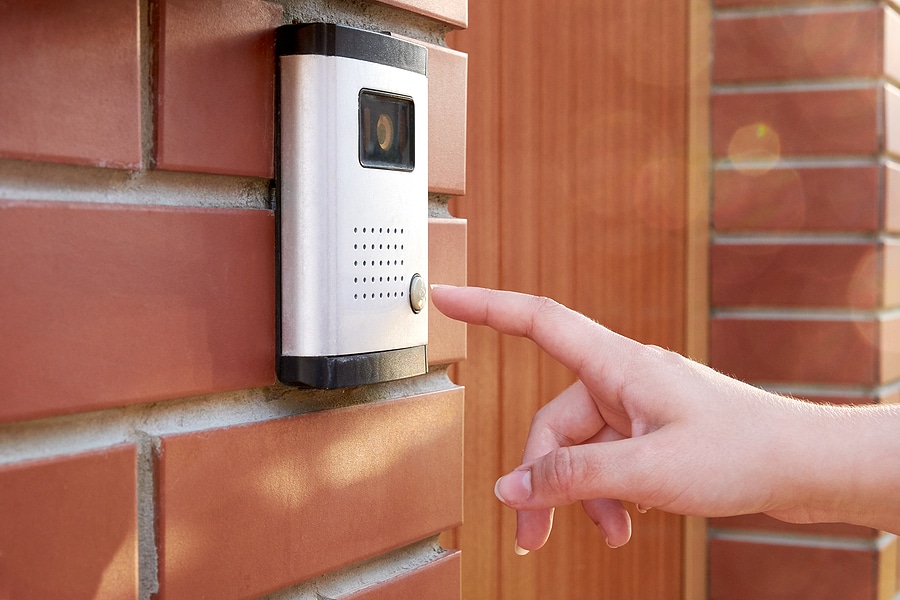By Jewelers Mutual® Group
As retail jewelry crime continues to increase across the U.S. and Canada, it’s important for jewelers to acknowledge the possibility of being impacted at some point. Make your store a hard target for criminals by installing a door security system like a door buzzer or mantrap to deter would-be thieves and even prevent unauthorized access to your store.
To help you determine whether a door buzzer or mantrap is right for your business, Jewelers Mutual Group highlights the differences between the two and offers tips to set up each one properly.

Door Buzzer
A door buzzer system acts as a doorbell to your business, where a single door is unlocked after the identity of the person requesting access is verified.
Develop an Operating Plan for Your Door Buzzer System
Before installing or setting up a buzzer, Jewelers Mutual recommends developing an operating plan. For example, who is assigned to allow access into the store, and what are the steps to verify who’s at the door?
Falsely identifying customers as criminals at your door can affect more than your sales—it can also lead to a negative public image. Help prevent this by ensuring that all your employees understand how to properly admit customers and how to deal with a suspicious incident.
Consider discussing these questions with your agent or broker regarding your door buzzer:
- Who has the final authority to admit or deny a person at the door?
- What reasons will they give for not granting access to your business?
- Will the police be contacted immediately, or will the incident be reported to a crime network?
- How will your business respond in the event of negative publicity?
- Will staff be prepared if a crime still occurs?
Mantrap
A mantrap system takes security a step further than the door buzzer by using two locked doors—only permitting one visitor at a time. Once an individual is between the set of doors, the first door is locked on the outside again. As your visitor is identified and granted permission inside of the store, the process repeats itself for other visitors waiting outside.
Does the Mantrap Comply with Fire Codes?
When using a mantrap, Jewelers Mutual advises to ensure the mantrap complies with your building’s
fire codes.
Fire codes often require that the doors remain unlocked from the inside so that dangerous situations like these don’t develop:
- A legitimate customer becomes stranded during a fire or a crime that is in progress.
- A criminal attempts a robbery or theft and can’t figure out how to exit.
Here’s a general example of how a mantrap works:
Are there other areas of your security that need attention?
While securing door access is an important step in improving security, it is just one component that should be included in a comprehensive store security plan. Here are a few additional precautions to consider:
- Installing burglary-resistant glass for your showcase sides, fronts, and tops.
- Using the presence of an armed, off-duty police officer.
- Using a UL-certified alarm system.